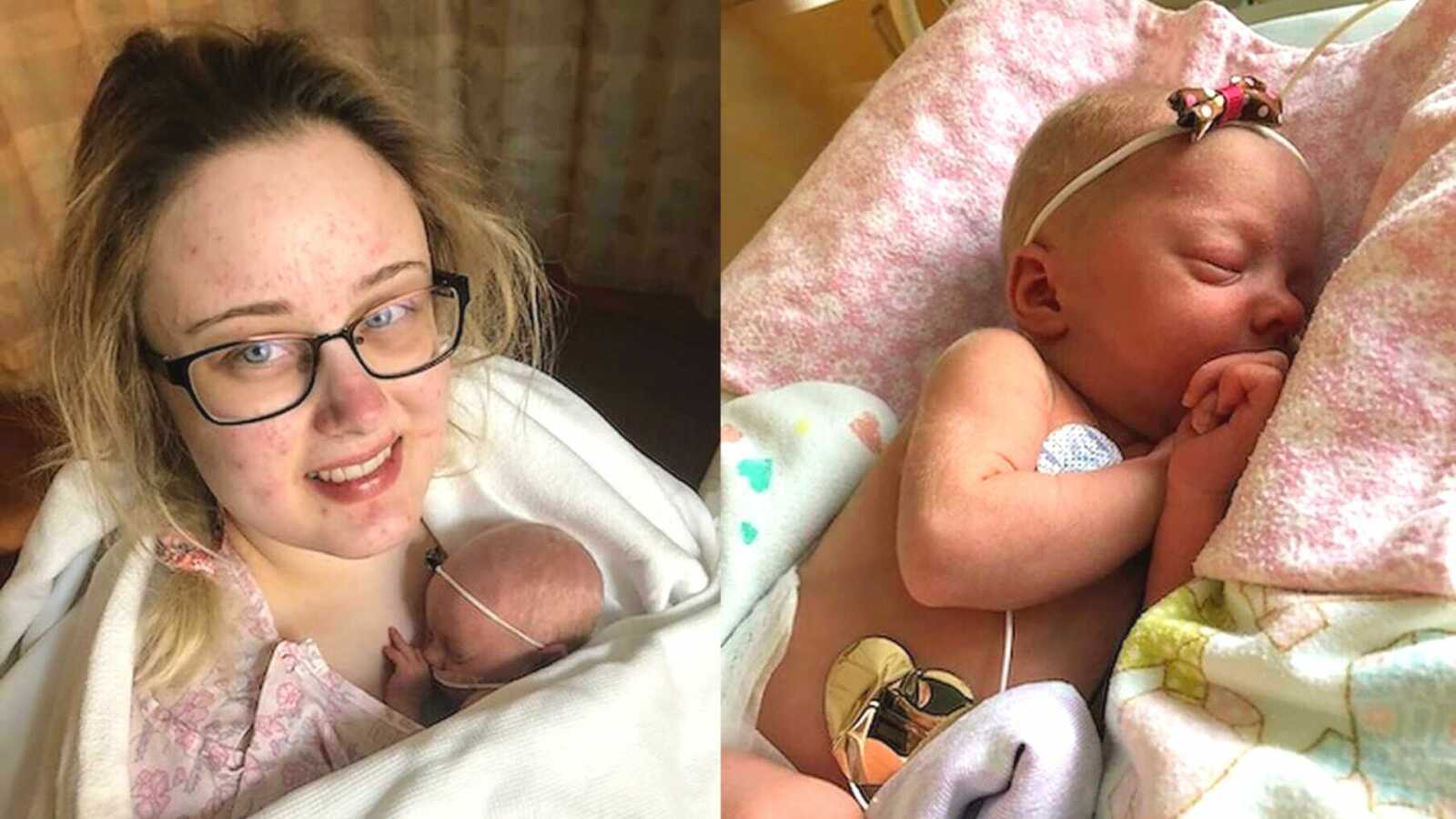Disclaimer: This story contains details of birth trauma that may be upsetting for some.
Beginning My Pregnancy Journey
“My journey with pregnancy first began early summer of 2018. That was when I got my first ever positive pregnancy test. My husband and I were trying to get pregnant, but not really trying. We went about it in a way of, we were ready to start a family, but it would happen when it happened. A few days after the positive test, I started to severely cramp and bleed. My husband, Steven, held me while we cried after leaving the ER. I had to mutter the words to myself, ‘I had a miscarriage.’ I would later experience two more, which were labeled as ‘chemical pregnancies.’
In late October of 2018, after two straight weeks of taking a pregnancy test every single day, I believed I truly could be pregnant. I never really believed it though, because I was just waiting to bleed and checking my underwear every time I went to the bathroom. Eventually, my first appointment with my doctor came around, and I got to see our baby on the ultrasound. It was so surreal, and I remember saying, ‘Wow. Something is actually there!’
My first trimester was pretty typical. I was extremely nauseous, although I never threw up, and I was sleeping all the time when I wasn’t working or in school (I was in my last semester of college at the time.) Because I was sleeping as much as I could, the first trimester went quickly. We told some of our family and friends about the pregnancy, but waited until 12 weeks to make it public knowledge.
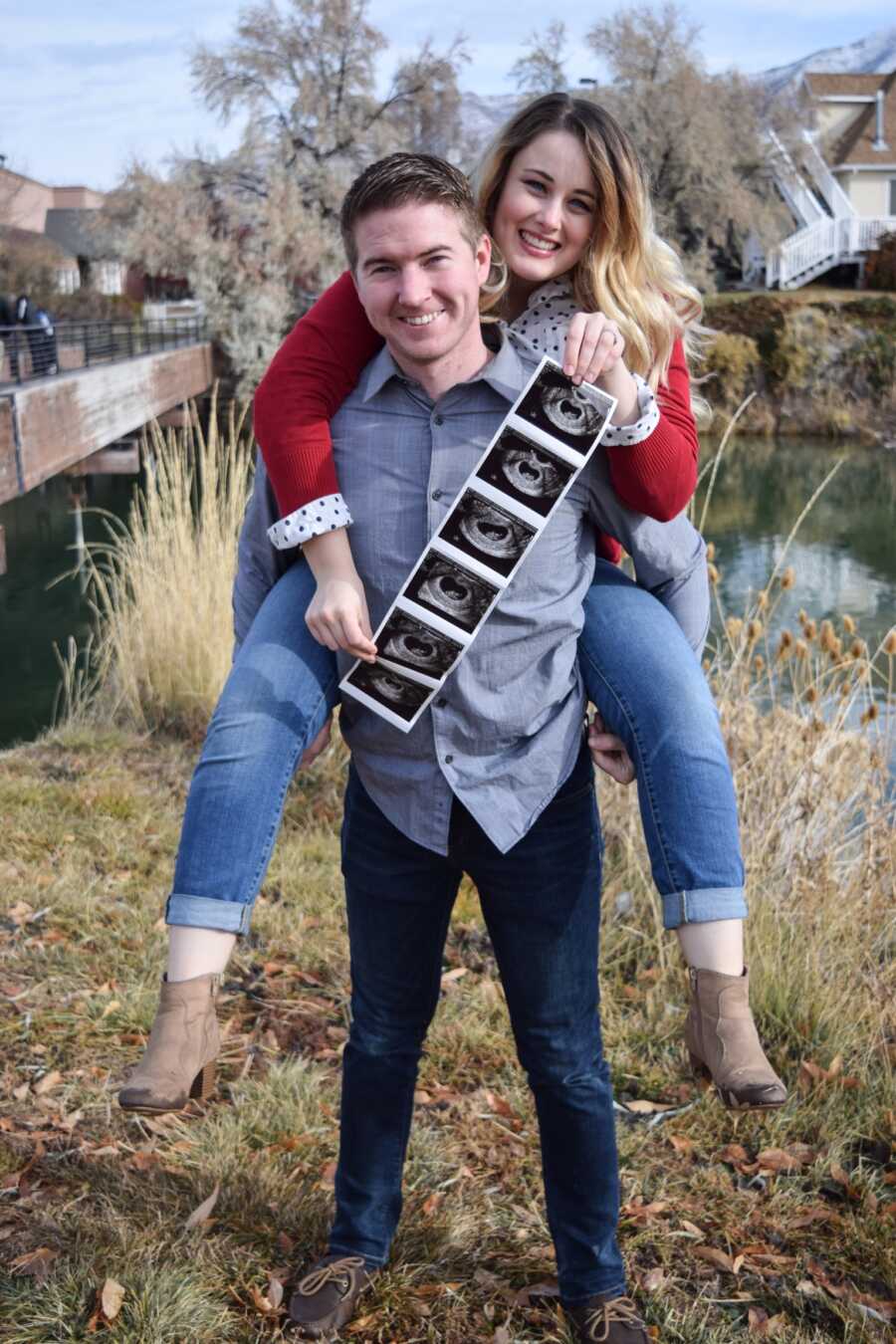
During the second trimester, I was feeling better, graduated college, and started my first post-grad job. My pregnancy belly was small, but at this point, it was of no concern to my doctor. In a way, it made it pretty easy to not feel or look pregnant. Once Steven and I decided we were ready to have kids, we dreamed of having a little girl join our family. At 16 weeks, I elected to have an ultrasound to see the sex of our baby and our dreams came true—we were having a little girl.
Signs Of Trouble
It wasn’t until I hit 28 weeks pregnant that any sign of the pregnancy being anything other than normal showed up. I went to my normal visit with my doctor, and she commented on how my blood pressure was getting a little bit higher each time I visited. She advised me to take my blood pressure morning and night and record my numbers. She asked me to go to a local pharmacy until I could get a blood pressure cuff through insurance. My doctor then told me if I ever hit 140/90 to immediately seek medical attention. It wasn’t ever explained why that number was so important, but I also never asked.
When I was 32 weeks, I took my blood pressure like normal before work, and I hit 140/90. Over the course of the next few weeks, I had multiple doctors visits, NSTs, ultrasounds, and blood draws. It was never really explained why I had these done, but I also never asked why. I was just doing what I was told.
During a doctor’s appointment, my doctor sent me to L&D. He wanted to do a 24-hour urine test to see exactly how much protein was spilling into my urine. Once I got there, the nurses were expecting me and immediately lead me to a room. They gave me a gown and instructed me to put it on without any underwear. After putting on the gown, I climbed into the hospital bed, and they immediately placed in an IV, took some blood, and asked me admission questions. I also had two monitors placed on my belly, one to track contractions and one to track my baby’s heart rate.
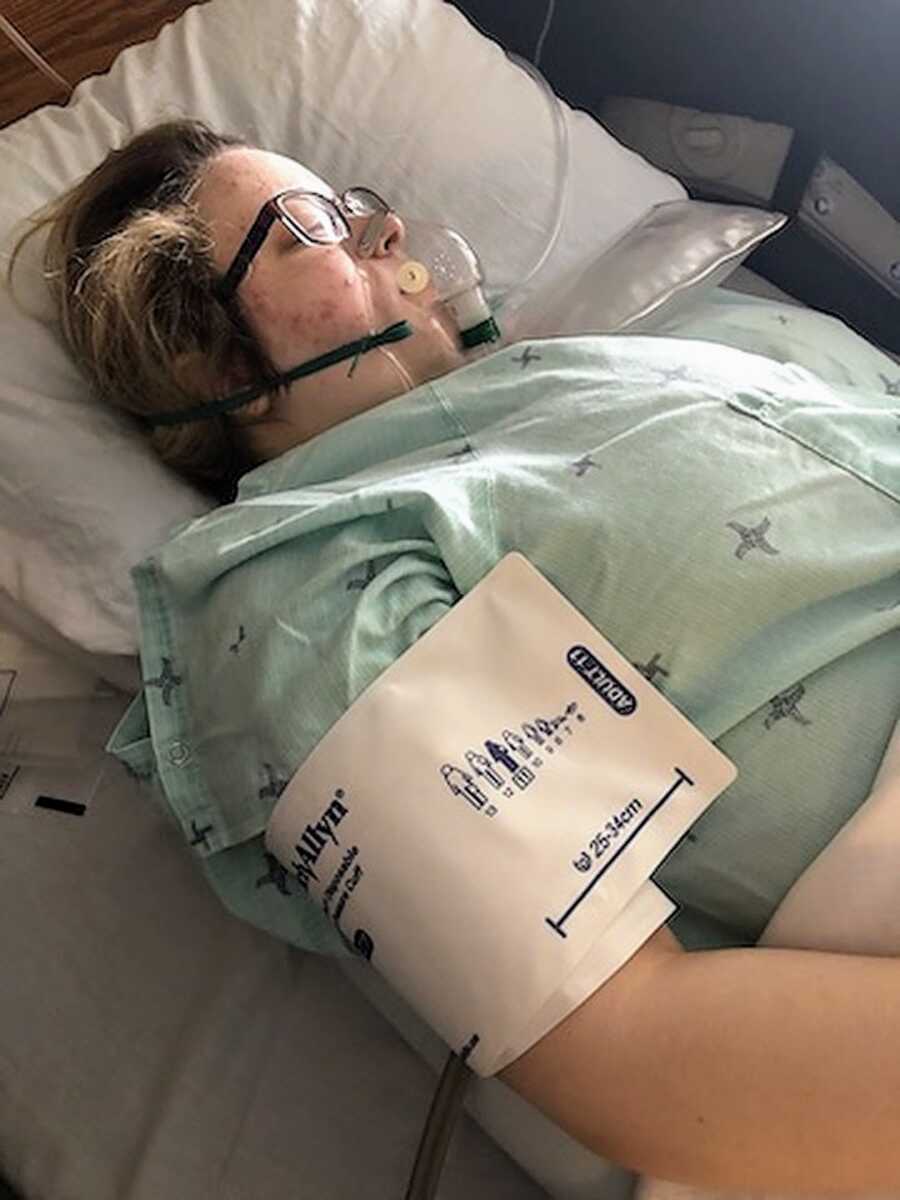
To complete the observation, every ounce of my urine was collected in a bucket for a urine analysis. The bucket went underneath the seat and hung above the water in the toilet. I peed as I normally would do, but instead of going into the toilet water, it went into the bucket. Usually, a nurse poured the toilet bucket into the big bucket, but they weren’t always on top of it. When the bucket was full and a nurse wasn’t around, Steven poured the toilet bucket into the big bucket. (True love is pouring your spouse’s urine into a bucket.)
Originally, the observation was only going to last 24 hours. Once hour 22 rolled around, I was starting to get really antsy because I wanted to get out of the uncomfortable hospital bed. I wanted to wear my own clothes and pee in my own toilet. I just kept telling myself, ‘Only a few more hours and then I can shower.’ And then hour 25 rolled around. And I told myself again, ‘Only a little bit longer and then I will be home. Then I can be home and cry and really process everything that happened.’
A nurse came in, and I asked when I would be able to leave as she repositioned the monitors on my belly. ‘He wants you in longer for observation,’ she replied. My eyes immediately swelled up with tears. My lungs were heavy. I lost control over all my emotions, and I started to cry hysterically. ‘I’m so sorry, I’m so so sorry,’ I whimpered to the nurse between tears. I felt embarrassed over losing my emotions like that. Steven spoke for me, ‘She just thought she would be home now.’
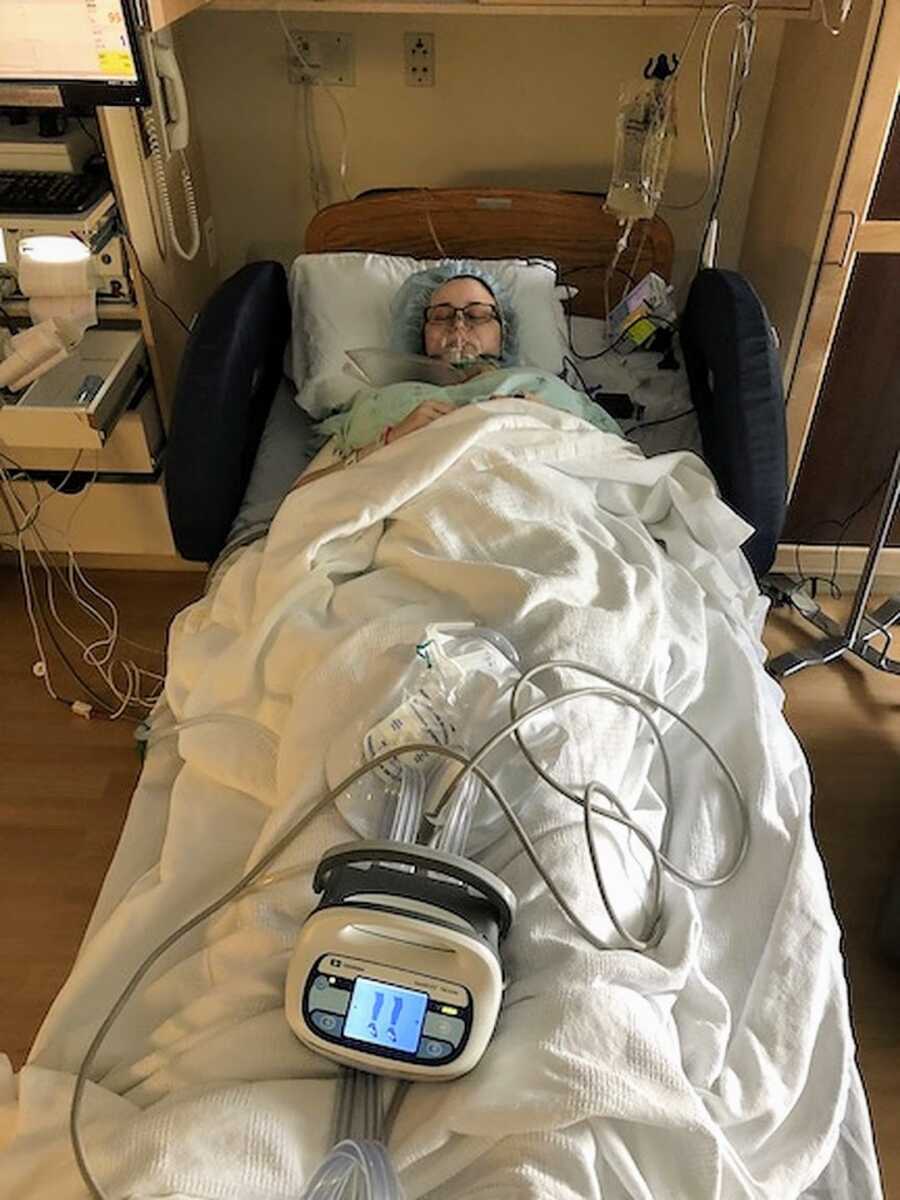
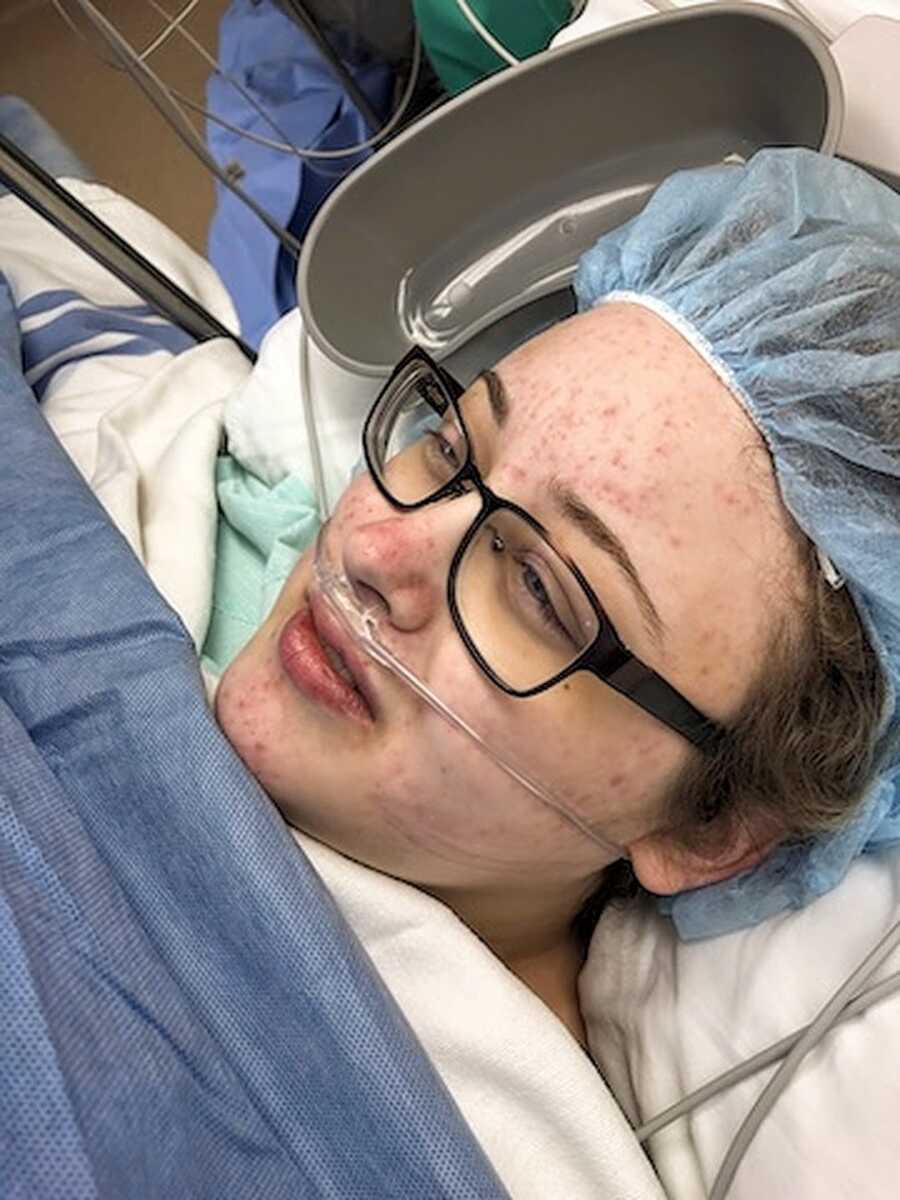
Finally, on the third day, after two rounds of steroid shots to help my baby’s lungs develop, lots of blood draws and different concoctions of drugs administered, I got to go home. I was given the diagnosis of preeclampsia and told to stay on bedrest. The goal was to make it to a scheduled induction at 37 weeks; I was 33 weeks at the time. I would spend the next few weeks after discharge at my doctor’s office nearly every day because my blood pressure would spike, and they would give me more medication to lower it.
Emergency Delivery
Two weeks after my first hospital admission, I was at my doctor’s office for a checkup. He immediately came into the room and said, ‘You are having this baby today.’ Steven and I looked at him, eyes wide. He continued, ‘This is very serious. You need to head straight to the hospital. I’ll meet you there. This isn’t a stop by Walmart and pick up a few things then go. You need to go straight there.’ We left the office, stumbled into our car dazed by what we just learned, and headed to the hospital.
Things happened so quickly. I put on a gown and Steven took a picture of me pregnant for the last time and then I climbed into the bed, ready to be hooked up. I was started on magnesium sulfate, antibiotics, and Pitocin through an IV. I had two monitors placed on my belly again. Nurses placed cushions along my hospital bed railings to protect me from injuring myself if I were to seize. My blood pressure was so high I was at a very high risk to seize or stroke. As soon as that was finished, my doctor broke my water. Once all the fluid came rushing out, my doctor placed a fetal scalp electrode on my baby’s head. Things progressed quickly to worse. I was eventually taken to the OR for an emergency c-section.
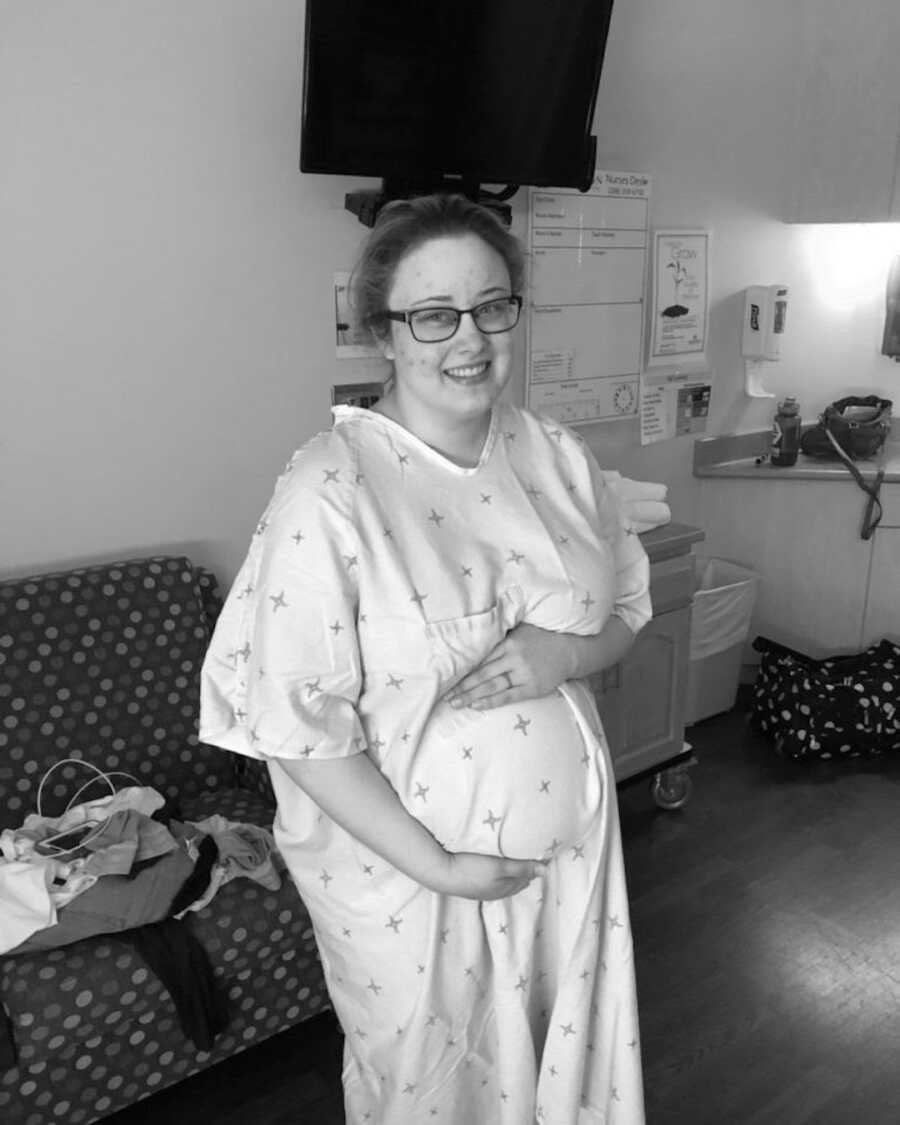
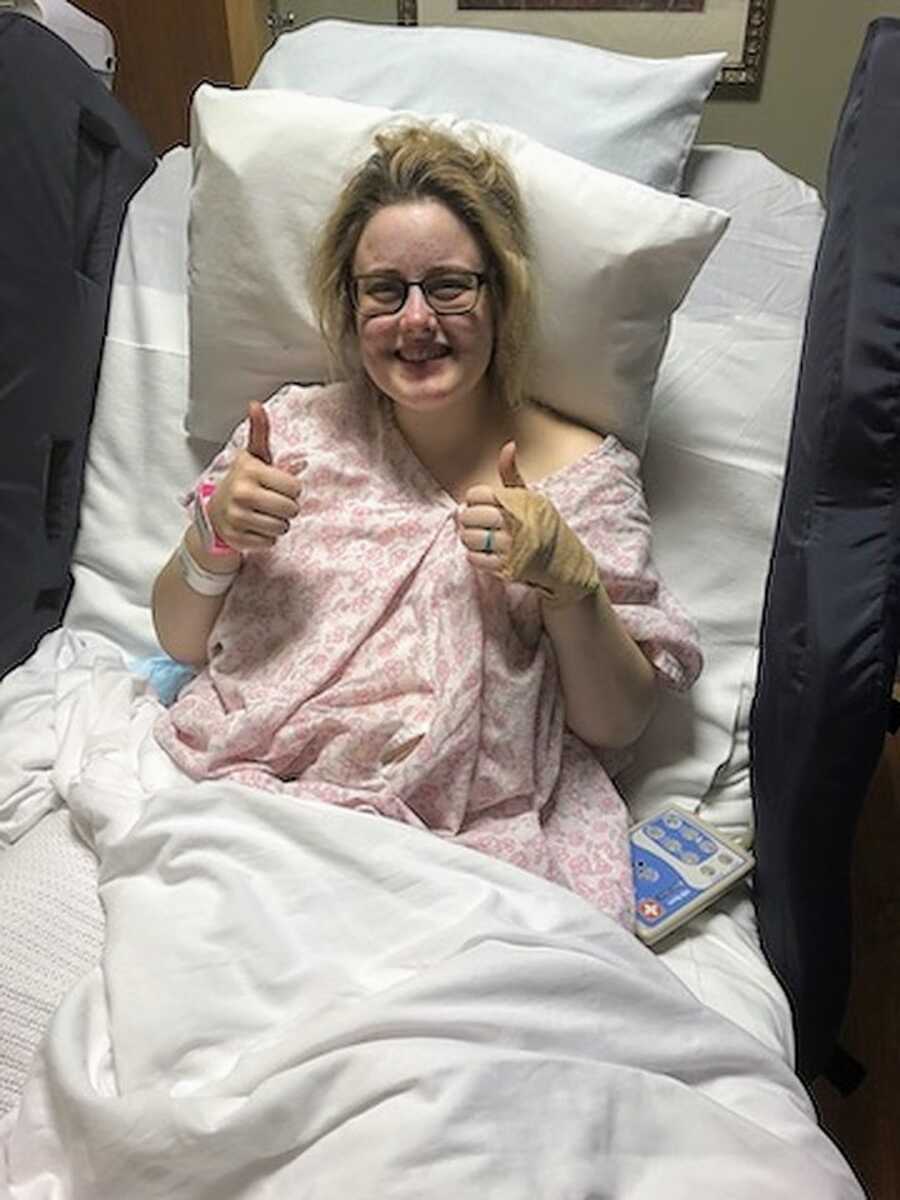
My daughter was born at 4 pounds and 17 inches. I never saw her because she was given to the NICU team immediately after she was born. The surgery was a complete blur and same with the rest of my six day hospital stay afterwards; I have little to no memory of my own of what happened or didn’t happen. I have only written out my birth story once, and I was only able to do so because I had my husband with me filling in all the gaps.
I couldn’t meet my daughter until 27 hours after she was born. I was able to finally be unhooked from the IV, and I was pushed in a wheelchair over to the NICU. I cried the moment I saw my little baby inside of a plastic box. A NICU nurse explained to me all the monitors, tubes, and wires on her, and then placed her onto my chest. Steven had previously spent most of the day and night with her in the NICU, but this was my first time seeing her not from a video or photo on my husband’s phone. My daughter, Cora, spent 15 days in the NICU before we could take her home.

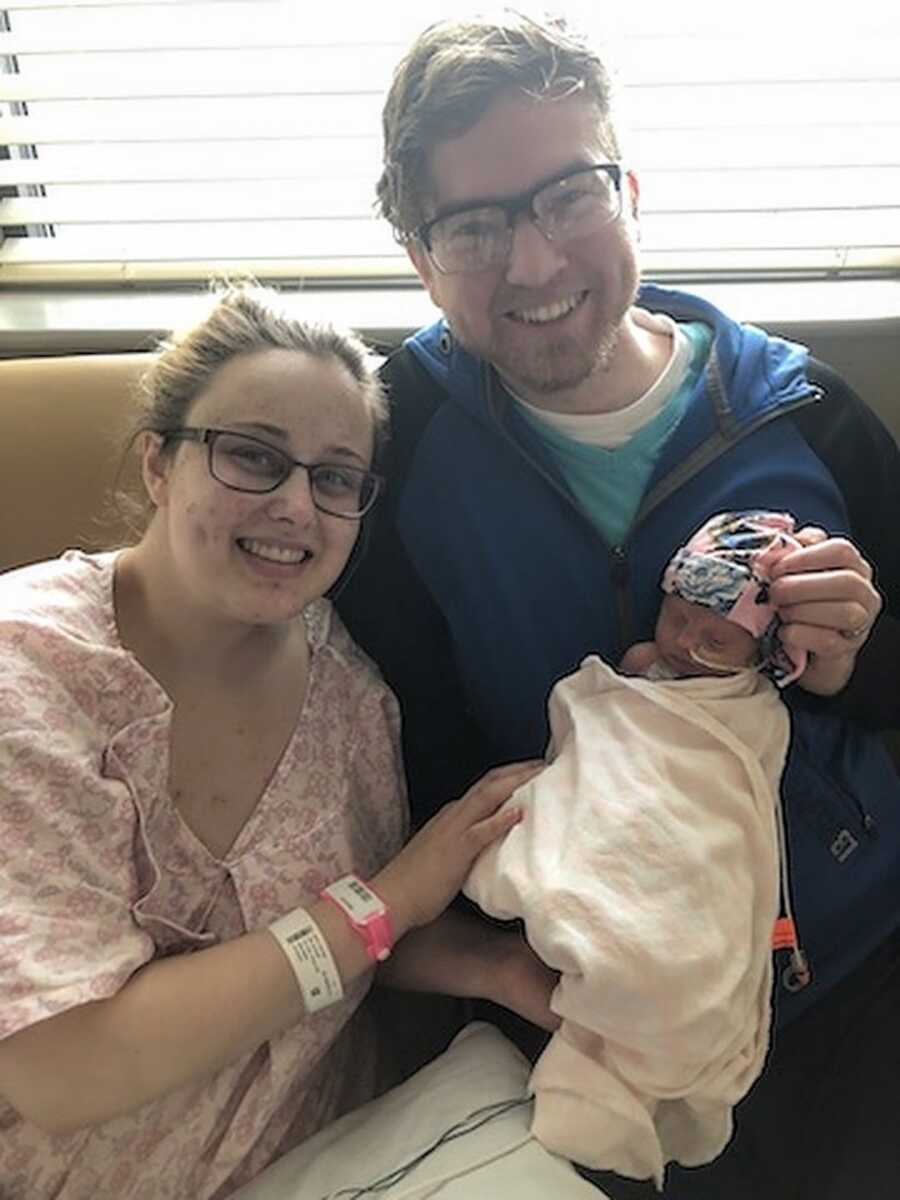
Coping With Trauma
Home life was hard for me. I struggled with the trauma I experienced and was unable to cope. Eventually, I sought out professional mental health help and started to heal. Steven and I attended therapy together, which helped us heal and grow even closer. We were two traumatized people coping in two different ways.
A few years ago, I started a blog called Knock on Motherhood. I always loved to write, and I needed an outlet. At first it started off as just a general motherhood blog where I shared recipes and ideas. It soon started to take a mind of its own a few months into blogging when I published my birth story. I was able to connect with others who had preeclampsia, like me. And, for the first time, I felt like I wasn’t completely alone. I was the only one I knew who had preeclampsia and a premature baby and a NICU stay in my real life.
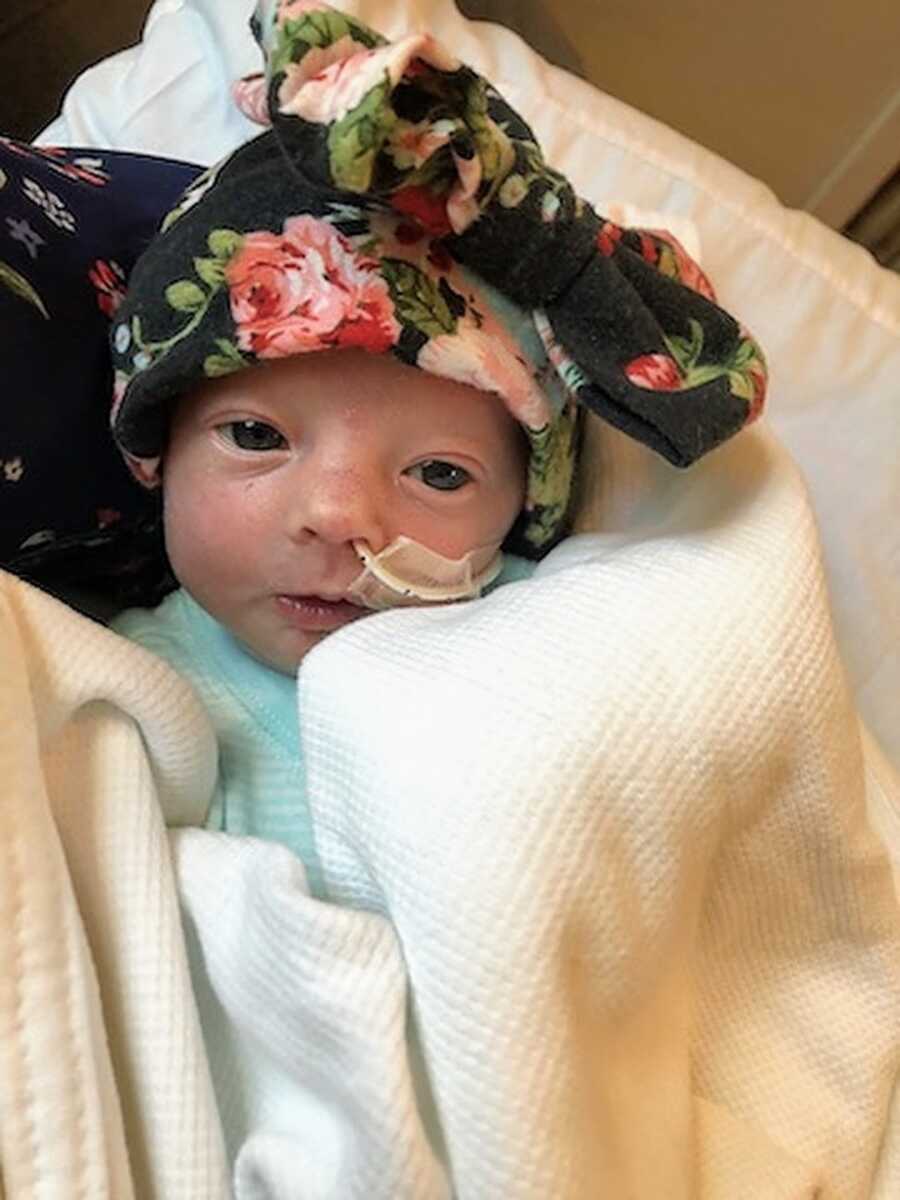
As I connected with more survivors, I kept feeling a pull inside of myself to share more parts of my experiences as a preeclampsia survivor and keep building a community. I share most of my journey on my Instagram page, and each time I do, part of me heals. It is very healing as a human to know you aren’t the only one in the world to have experienced what you did. And every time I share a blog or Instagram post, I get at least one comment or direct message with someone thanking me for sharing because they felt the same, or sharing parts of their story with me because they consider me a safe person to confide in.
It has become my life mission to be an advocate for preeclampsia. I share facts about preeclampsia, parts of my story as well as stories of others. If I was able to help one person not feel as lonely as I felt, my life mission would be complete.
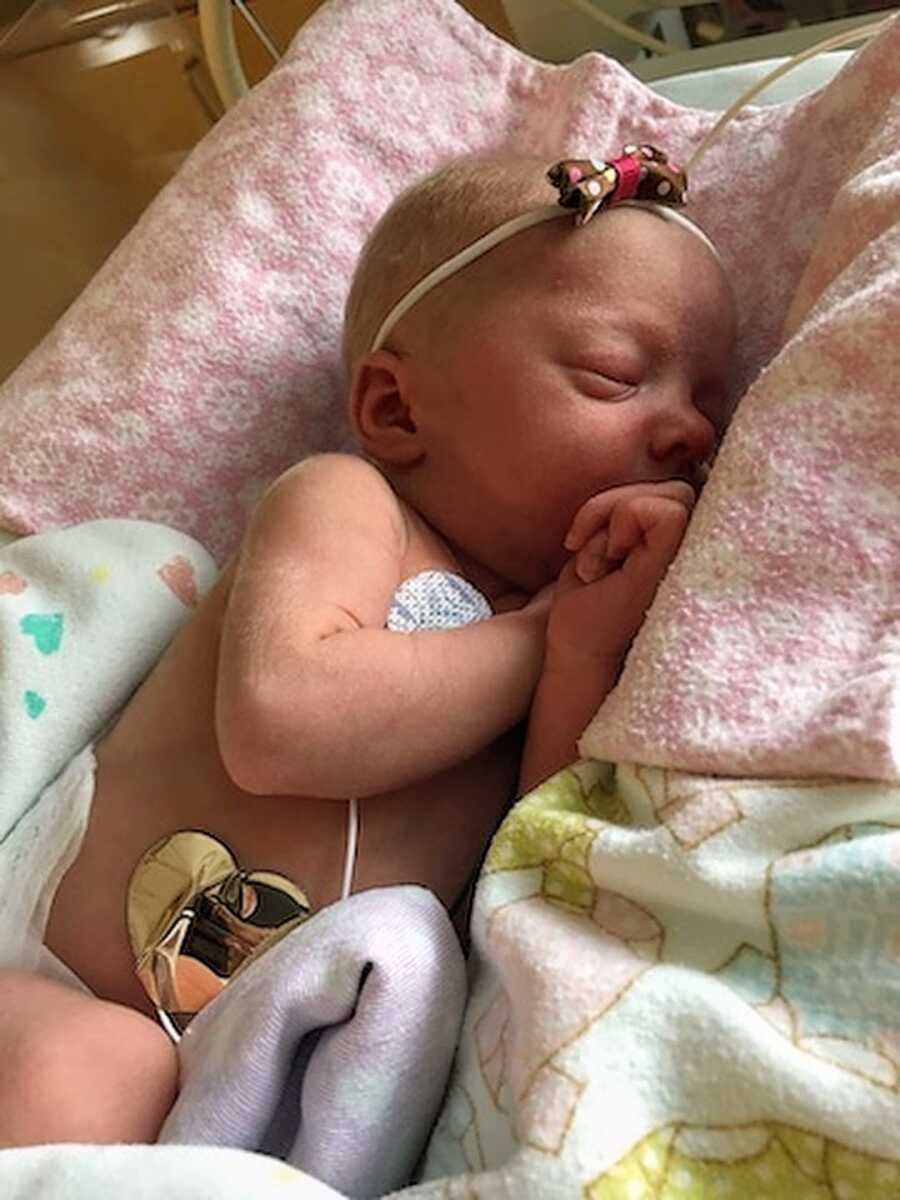
I am 3 years out from my preeclampsia experience now. My daughter doesn’t have any lasting effects from her NICU stay or premature birth. She is completely all caught up from her developmental delays. Steven and I no longer feel completely powerless to the trauma we experienced from our birth and Cora’s NICU stay. We are now advocates for preeclampsia and do everything we can to spread awareness and help other parents who are like us.
To those who are currently battling preeclampsia or had preeclampsia, my heart goes out to you. What you have been through, or are going through right now, is so difficult. Take all the time you need to grieve your expected birth experience. Reach out for help by mental health professionals, doctors, and others in the preeclampsia community. What you went through matters. You matter. And one day, it won’t hurt as bad.”
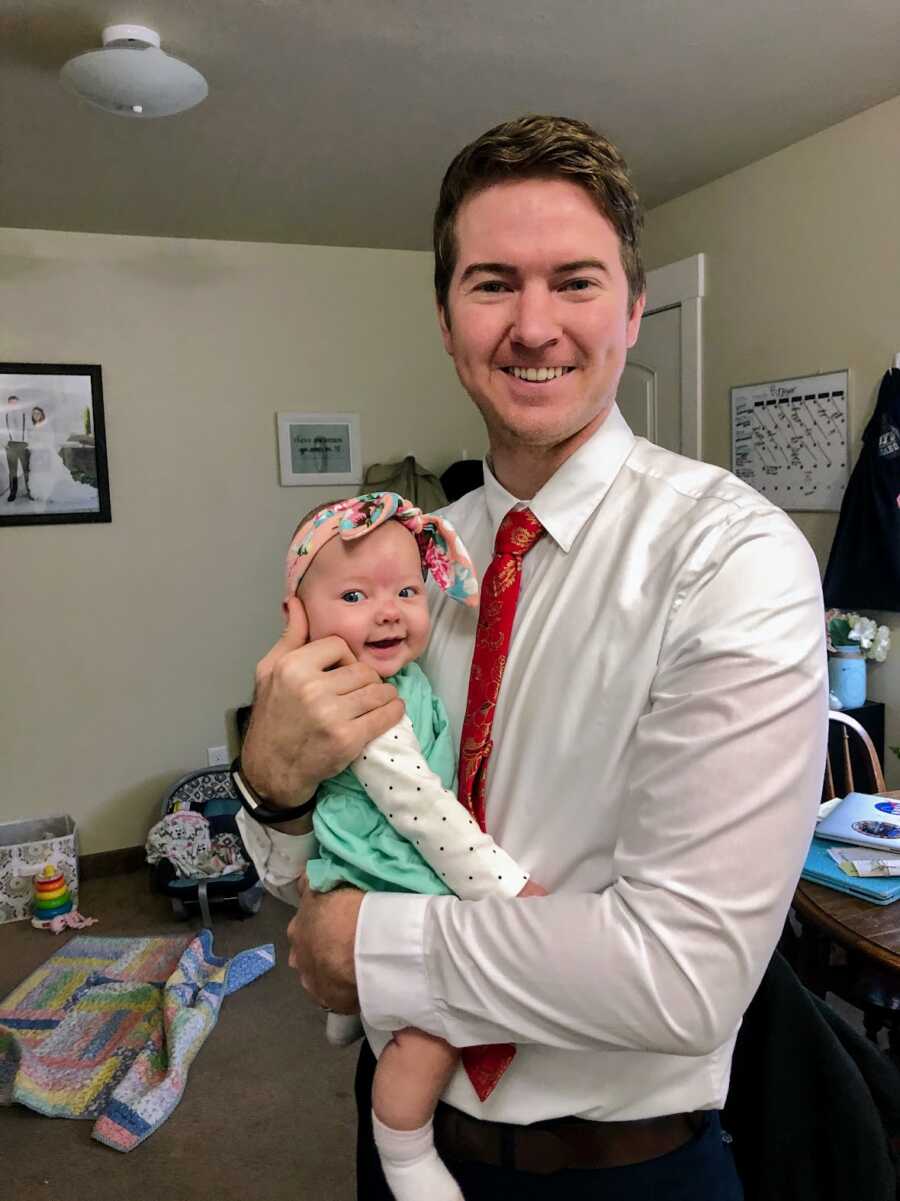
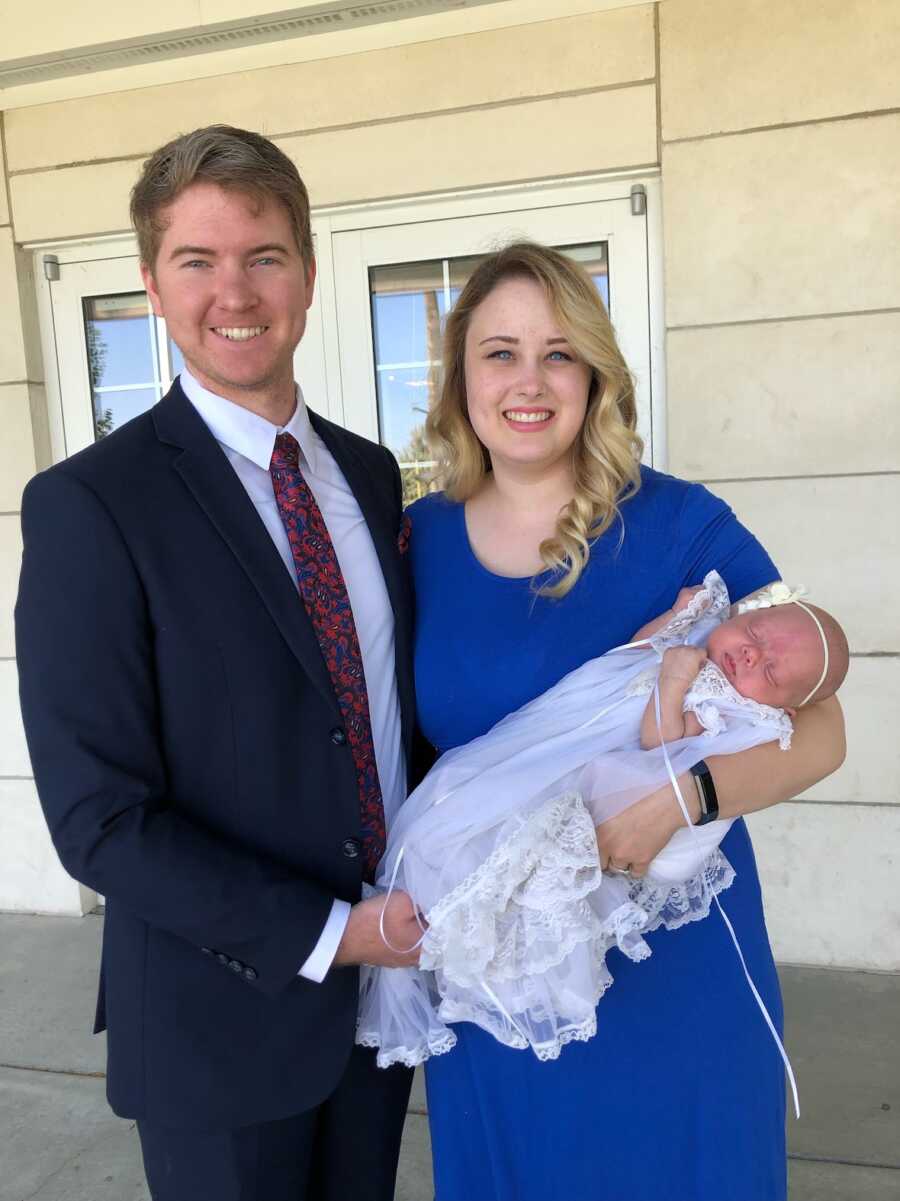
This story was submitted to Love What Matters by Courtney Smith from Idaho. You can follow her journey on Instagram, Facebook, and her website. Submit your own story here, and be sure to subscribe to our free email newsletter for our best stories, and YouTube for our best videos.
Read more stories like this:
Provide hope for other struggling mothers. SHARE this story on Facebook to help spread awareness.

